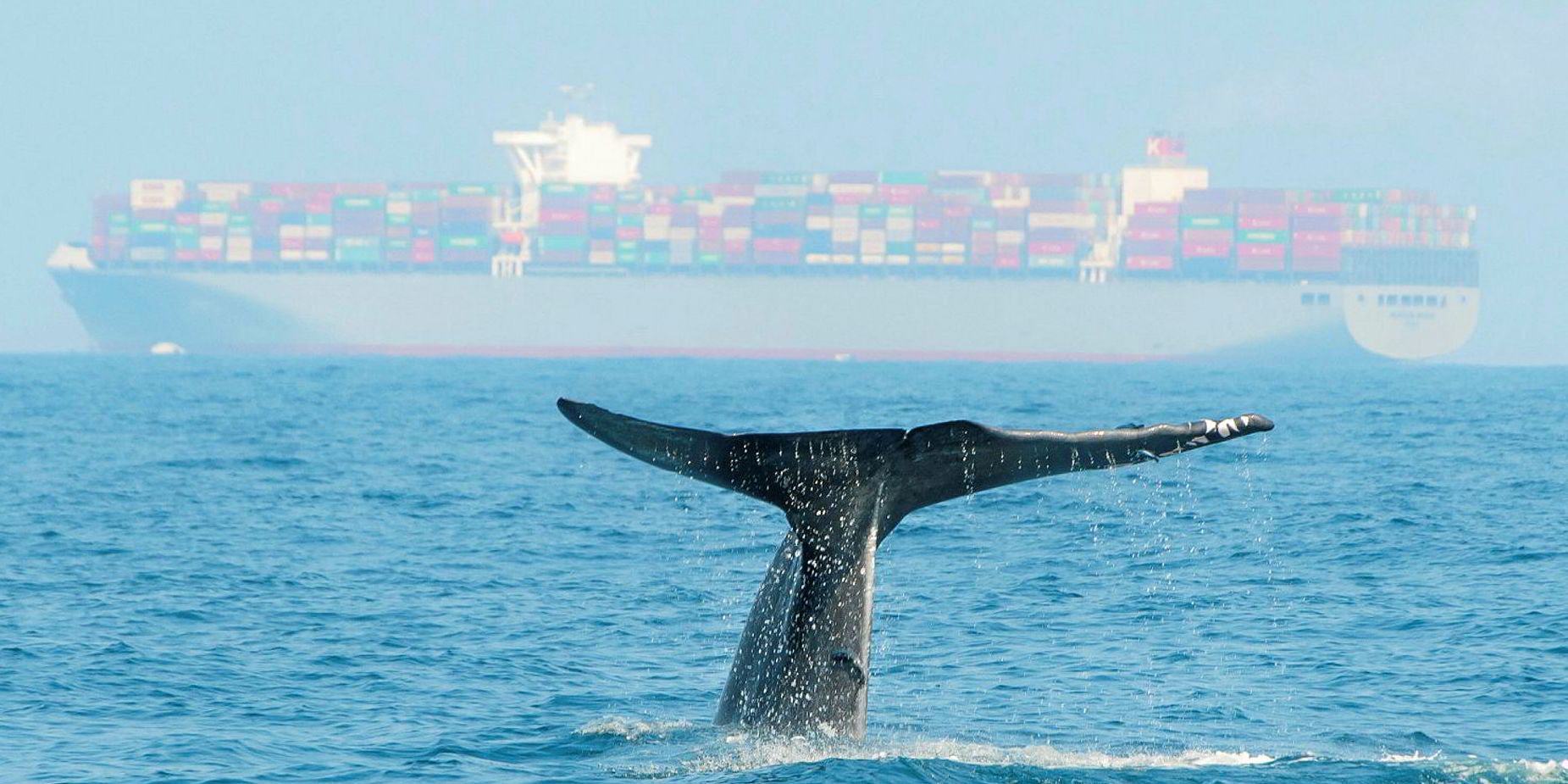Noise pollution is on its way to becoming another environmental factor the shipping industry will have to get to grips with as emission controls tighten.
The good news is that vessel noise abatement can sit neatly with responses to emissions, such as cutting ship speeds and improving hull design.
Much deepwater sea life depends on sound to communicate, locate food or find mates — abilities that are increasingly being hampered by noise pollution, also known as anthropogenic sound. Shipping is the primary cause of this pollution as bigger vessels with larger engines sail in rising numbers to transport growing global trade.
Incidents in which whales and dolphins get lost, beach and die are likely to increase public pressure for regulation. The IMO has already created guidelines that could provide the basis for new noise rules.
Sea noise levels are estimated to have grown at least 10 times louder in the past 50 years. Sound carries more efficiently in water than air, so vessel noise can spread over large areas.
Ten years ago a study by the Scripps Institution of Oceanography University of California San Diego identified commercial shipping as the main contributor to oceanic noise.

Report author Professor John Hildebrand claimed that propeller cavitation — the formation and popping of bubbles as blades rotate — accounts for 80%-85% of ship-radiated noise power at the low frequencies up to 500Hz at which marine mammals tend to communicate. Engines, machinery and hydraulic flow over the hull are other contributors.
Scripps argued for a long-term monitoring programme to track changes in ocean noise, and moves began in 2011 to set up the International Quiet Ocean Experiment to observe the effects of sound on marine organisms.
In another paper Hildebrand contributed to, it was said that the highest broadband level of 188dB was recorded from a 54,000-gt containership (close to the sound of a rock concert), while a 26,000-gt chemical tanker produced the lowest, 177dB. Bulkers had higher noise frequency source levels near 100Hz, while boxships and tankers were predominantly below 40Hz.
Whales and other marine mammals are unlikely to swim close to large ships, so it is thought the sounds they experience may be close to that of a lawnmower or a vacuum cleaner. Killer whales, of which it is estimated there are fewer than 100 left foraging up the US West Coast, are listening for clicks made by salmon, so it would be no surprise if they are finding it harder to find their food.
Another study in the North Atlantic suggested that air guns used in offshore oil exploration seismic operations along continental margins propagate into the deep ocean and are a significant component of low-frequency noise.
Nyepi, an annual day of silence held in Bali, allowed a unique experiment to test the drop in ocean noise when everything, including shipping and fishing, shuts down. Rob Williams, co-founder of Seattle-based cetacean conservation group Oceans Initiative, placed six hydrophones in the water in 2017 to measure the effect, according to an article in Nature magazine. “The drop was in the order of 6-9dB,” he reported.
In March this year, South Carolina congressman Joe Cunningham blasted a 120dB air horn at a US House of Representatives subcommittee hearing on the environmental impact of seismic air-gun testing, after a government official, Chris Oliver, said there was no evidence that the devices had a dangerous effect on marine life. Oliver agreed they could be detrimental after admitting the horn was a nuisance and being told a seismic air gun would be 16,000 times louder.
Marine animals are often panicked by alien sounds, and deaths can occur due to haemorrhages, changed diving patterns, migration to different places and damage to internal organs.
An organisation of 11 ports was set up two years ago by the Port of Rotterdam Authority to look into reducing ship noise pollution for residents living near terminals. The Neptunes project does not address underwater sounds, but by March this year had formulated a uniform measurement protocol for noise from various types of vessels.
Neptunes says “the path is now open to integrate the label into the IAPH Environmental Shipping Index”, which has more than 7,000 ships on its register. Many large ports have adopted the index to reward owners of vessels that meet and exceed IMO emission standards.
Lloyd’s Register has also released an airborne noise emission notation and ShipRight procedure to meet the demand for standards. This progress has emerged in parallel with the United Nations agreement on the need to conserve ocean health in ways that include cooperation to address anthropogenic noise. The European Union has adopted legislation to achieve healthy marine systems by 2020 that includes provisions to ensure underwater noise does not “adversely affect” marine life.
Marine animals are often panicked by alien sounds, and deaths can occur due to haemorrhages, changed diving patterns, migration to different places and damage to internal organs
This year, the Standard Club issued a notice on anthropogenic sound as part of efforts to alert members to potential issues. Author Freddie Hawke, who has since moved to the shipping practice of UK legal chambers 4 Pump Court, believes social media is likely to pick up and push the issue, and the shipping industry will need to respond. He cites the way concerns about plastic in the oceans have escalated in the past few years.
The IMO guidelines were based largely on a submission by Swedish organisation Ascobans, the Agreement on the Conservation of Small Cetaceans of the Baltic, North East Atlantic, Irish and North Seas. Cetaceans include whales, dolphins and porpoises.
Ascobans said “much, if not most, of the underwater noise is caused by propeller cavitation, but onboard machinery and operational modification issues are also relevant”.
It sees the biggest opportunities for reducing underwater noise coming during the design of a ship and propellers in ways that reduce cavitation. Optimum combinations of shaft speed and blade angle are required for controllable-pitch propellers, as they do not necessarily create lower noise at slower speeds.
“In general, for ships equipped with fixed-pitch propellers, reducing ship speed can be a very effective operational measure for reducing underwater noise, especially when it becomes lower than the cavitation inception speed [the lowest speed at which cavitation occurs],” Ascobans concluded.
In other research into running a boxship at different speeds, cumulative noise was found to be lowest at eight knots, equivalent to a 65% reduction in speed. But slowing down by three knots can halve noise intensity for some ships, according to another study.
The time has come for shipping to address noise abatement as it considers new technologies and speed-reduction schemes within the work being done to reduce emissions and hit decarbonisation goals.





